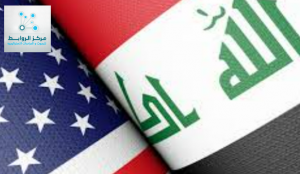: Shatha Kalel
Iraq sits atop one of the world’s richest reserves of oil and gas, yet decades of political dysfunction, insecurity, and underinvestment have limited the country’s ability to fully capitalize on this wealth. As the global energy landscape shifts, Iraq is cautiously advancing gas capture and processing projects to reduce flaring, generate power locally, and improve energy self-sufficiency.
Despite some progress, however, political interference, corruption, and bureaucracy continue to hinder implementation timelines and investor confidence. Delays in energy projects remain symptomatic of a broader governance crisis, which undermines both economic performance and political legitimacy.
Key Projects and Progress: Signs of Movement
A flagship initiative is the Gas Growth Integrated Project (GGIP), spearheaded by France’s TotalEnergies alongside Basra Oil Company and QatarEnergy. This $10 billion multi-energy venture includes the development of the Ratawi gas hub, designed to process 600 million standard cubic feet per day of associated gas. In January 2025, construction began on the project’s first facility, which will initially process 50 million cubic feet per day of previously flared gas to be redirected for domestic power generation.
China has also secured a foothold in Iraq’s gas infrastructure. Chinese companies are engaged in GGIP construction, while Beijing-backed projects like the Halfaya Gas Processing Plant, operational since June 2024, reflect China’s growing influence in Iraq’s energy sector.
The Basrah Gas Company, a joint venture between Iraq’s South Gas Company, Shell, and Mitsubishi, remains one of the largest contributors to Iraq’s associated gas processing capacity, handling output from massive oil fields such as Rumaila, West Qurna 1, and Zubair.
Challenges: Fragile Energy Security and Political Risk
Despite these high-profile developments, Iraq’s energy security remains deeply fragile. In May 2025, the country lost around 4,000 megawatts of power, largely due to reduced gas imports from Iran and Washington’s recent termination of sanctions waivers allowing Iraq to import Iranian electricity. This event exposed the dangerous overreliance on imports and the vulnerability of Iraq’s power grid.
These events should serve as a wake-up call for Baghdad to diversify energy sources, accelerate domestic gas production, and modernize its grid. However, this requires a level of institutional coordination and political will that remains elusive amid persistent interference from rival factions, lack of accountability, and shifting regional dynamics.
The Political Economy of Energy
Corruption and bureaucracy remain the Achilles’ heel of Iraq’s energy sector. Investors face delayed project approvals, unclear regulations, and widespread rent-seeking behavior by political elites and militias. The complexity of decision-making—often requiring sign-off from multiple, competing ministries and security actors—further hampers progress.
These internal dysfunctions are compounded by external geopolitical tensions. Iraq remains caught in the crossfire between US and Iranian interests, both of which seek influence over the country’s security and energy pathways.
Security Dimension: Strategic but Fragile Partnerships
A robust energy partnership between Iraq and the United States depends not only on economic cooperation but also on sustained security. For US investors and policymakers, the prerequisite is political stability and reduced militia activity.
The presence of U.S. troops, invited by Baghdad since 2014 as part of the anti-ISIS coalition, has been a pillar of Iraq’s defense posture. Since the territorial defeat of ISIS in 2017, U.S. forces have shifted to a support role, advising and enabling Iraqi forces to prevent resurgence. But recent threats—especially from Iran-backed militias—pose serious risks to both security and investment.
As tensions between Iran and Israel risk flaring again, U.S. officials warn that militia expansion in Iraq could escalate, further destabilizing the investment climate and endangering foreign personnel and infrastructure.
Economic and Political Impact: A Tense Crossroads
Economically, Iraq stands at a crossroads. If the GGIP and related projects succeed, they could:
Significantly reduce gas flaring
Increase local energy generation
Decrease dependence on Iranian imports
Spur job creation and technology transfer
However, without reforming governance structures, these benefits will remain unevenly distributed, susceptible to elite capture, and likely to deepen existing regional disparities.
Politically, success in energy development could enhance the legitimacy of the central government and offer a counterweight to militia power. But failure to manage competing foreign interests or address internal corruption could lead to more instability, weaken Baghdad’s authority, and fuel further public discontent.
Conclusion: Potential vs. Reality
Iraq’s vast energy potential is both a blessing and a curse. While major projects like GGIP offer a glimpse of economic renewal, they remain embedded in a fragile political and security environment. Real progress demands more than infrastructure—it requires good governance, transparent policies, and regional diplomacy that places Iraq’s national interest above factional or foreign agendas.
Economic Studies Unit / North America Office
Al-Rabetat Center for Research and Strategic Studies

